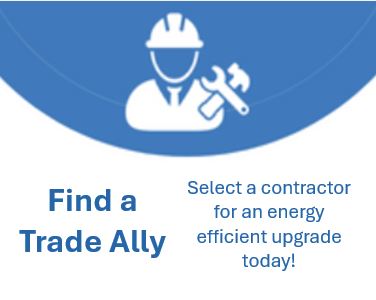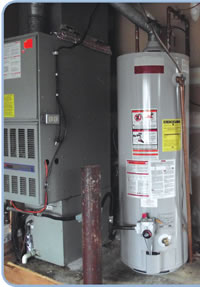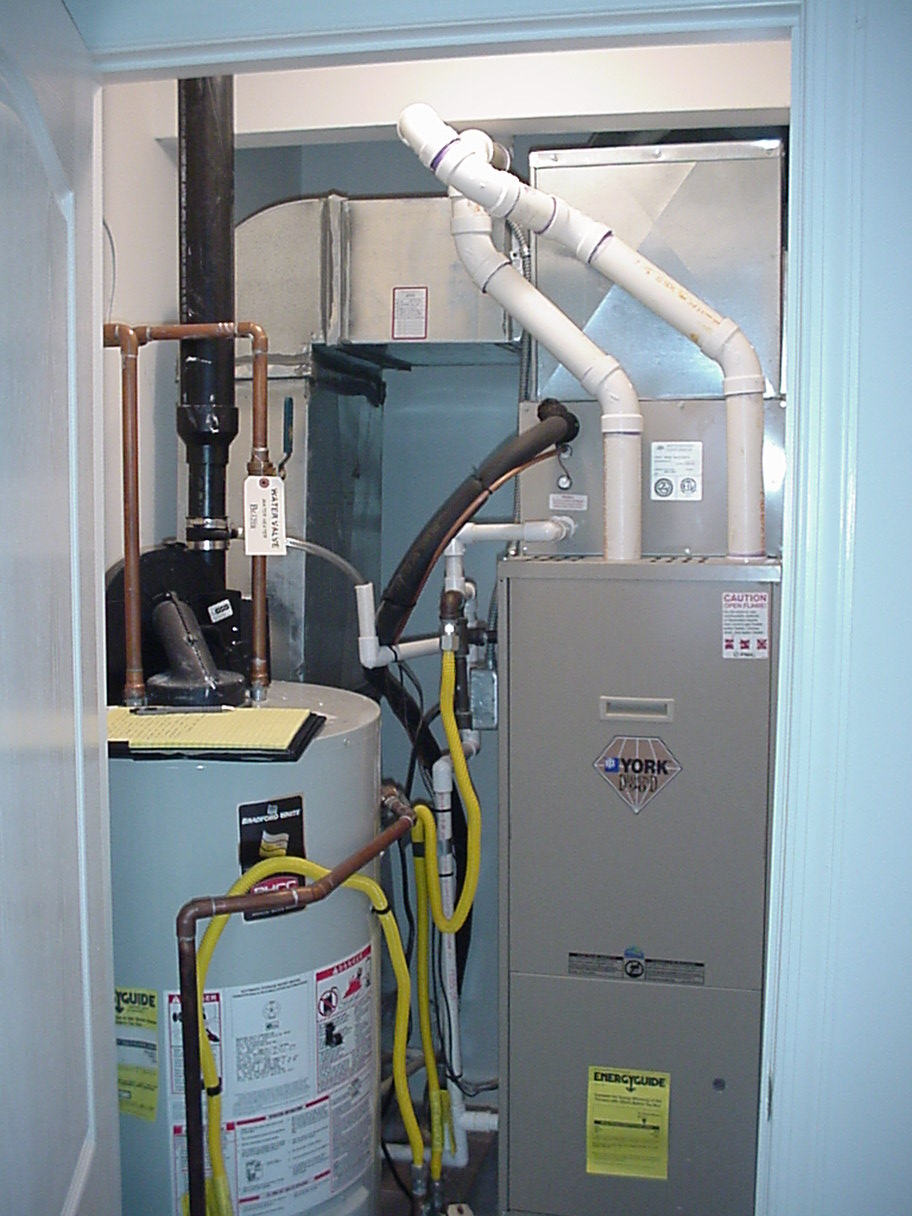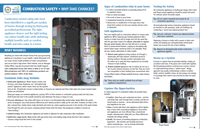Combustion Safety
• Download this Combustion Safety Information as a PDF
Learn more by reading the Frequently Asked Questions

Breathing air mixed with exhaust fumes from your gas-burning appliances is hazardous to your health. Carbon Monoxide (CO) can cause chronic health problems at lower concentrations and can be fatal in high doses. Other irritants, such as Nitrogen Oxides (NOx), may also be present that have health impacts. Safe combustion means that there is little or no CO and NOx production and 100% of combustion products are vented outdoors 100% of the time. Common risks may include: Vulnerable Appliances: Water heaters, boilers and furnaces, (and many fireplaces), are “atmospherically vented” appliances, which means these are the systems most at risk. Of particular concern is when boilers or furnaces are replaced and these older style (non-power-vented) water heaters are left behind. Many gas ranges are unvented appliances, releasing 100% of their exhaust or combustion products back into the home. Range hoods that vent to the outside should be used whenever the stove or range is in use. • Pressure imbalances. Gas mixes with indoor air to burn in an atmospherically vented water heater. When the system works as designed, very small pressure differences push exhaust products safely up the vent (left). However, exhaust fans, clothes dryers, leaky ductwork and wind can create negative pressures in the vicinity of the water heater. Flow through the vent can reverse, meaning exhaust fumes enter the home. This dangerous condition is known as "spillage" or “back drafting.” • Limited testing. Few combustion appliances are tested or adjusted for safe combustion after installation. • Ineffective range hoods. Many homes with gas stoves have recirculating range hoods that don’t vent outdoors. If having a range hood installed or replaced, install a hood that vents to the outside. |
||
|
Signs of combustion risks in your home A carbon monoxide detector occasionally going off for no apparent reason • Rust on metal vent pipes Safe Appliances The most reliable path to combustion safety is to choose safer appliances. When replacing gas heating equipment (like a furnace or boiler) that will no longer vent into the same flue with the gas water heater, it is always advisable to replace the gas water heater with one that will vent in a similar, direct or power-vented fashion. Leaving an atmospherically vented water heater vented by itself is not advisable. There are two modern alternatives to older models: 1. Direct vent appliances bring outdoor air through a sealed pipe and help exhaust combustion products directly outdoors through another hard-piped vent. No indoor air is used and these appliances are virtually immune to back drafting. 2. Power-vented appliances rely on indoor air, but use a fan to push exhaust products out the flue. They are much less susceptible to back drafting than conventional units. Choose Direct vent or Power-vented furnaces, water heaters and boilers. Tip: These units are readily available from all major appliance manufacturers.
Capture the Opportunities A careful approach to combustion safety can provide many benefits: • Comfort. Open flues and combustion air ducts – and the cold drafts that come through them in winter, and the hot humid drafts in summer – can be eliminated when direct vent appliances are used. • Value. A home with direct vent appliances will be tighter than a home with conventional appliances. Some direct vent appliances are more efficient than conventional models, meaning lower utility bills, too. These differences translate into energy savings. • Health. The chance of breathing dangerous combustion byproducts – like odorless and invisible poisonous carbon monoxide gas – can be virtually eliminated.
Direct Vented Furnace and Power-Vented Water Heater |
Testing for Safety All combustion appliances, including gas ranges, Direct vent and Power-vented appliances should be tested and tuned for minimal carbon monoxide output. Tip: Ask for carbon monoxide test results for all combustion appliances.
All atmospherically vented combustion appliances should be checked for safe operation, under all conditions, by conducting a "worst-case depressurization test." Tip: Ask your contractor if worst-case depressurization tests were conducted.
Replacing a furnace or boiler with a power or direct vent model, but keeping your atmospherically vented water heater can increase the risk of back drafting. Tip: Replace all atmospherically vented combustion appliances together.
House as a System A house is a system that incorporates heating, cooling, air circulation and more. If the pieces don't work well together, life-threatening problems could become a serious concern. In a high-performing home, a "whole-house" design approach and quality craftsmanship combine to deliver better comfort, healthier indoor air and energy cost savings in a package that's built to last and hold its value for years to come. What should I do? A home energy audit conducted by a Building Performance Institute (BPI) Goldstar certified contractor is your best first step. The contractor can identify areas in your home that could be of concern to your family's health and safety. They can inspect and test combustion appliances, such as heating equipment, ovens and water heaters for proper performance. This includes measurement of carbon monoxide produced by the appliance, along with testing to ensure that potentially dangerous combustion gases are not introduced into your home.
|
|






.jpg)




 Combustion-related safety risks have been identified in a significant number of homes through testing by third-party accredited professionals. The right appliance choices and the right testing can reduce health risks while delivering multiple benefits such as comfort, health and extra value to a home.
Combustion-related safety risks have been identified in a significant number of homes through testing by third-party accredited professionals. The right appliance choices and the right testing can reduce health risks while delivering multiple benefits such as comfort, health and extra value to a home.
